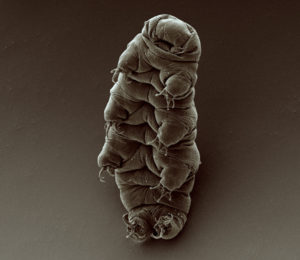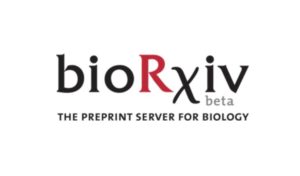
Oxford Dictionaries has picked “post-truth” as the Word of the Year – what a sorry state of affairs, laments ASCB President Peter Walter, encouraging the community to come together and stand up for science and evidence-based learning. And with that, the 27th annual meeting of the American Society of Cell Biology kicked off in San Francisco.
Always a highlight of the year, the meeting brings together thousands of biologists from across the globe to present and discuss a scope far wider than just cell biology, a theme evident from the fascinating, and in some cases bewildering, range of sessions.
Water bears and virgin births

In truth, the meeting began before Walter’s introduction, with the ‘special interest’ sub-groups. ‘Special’ should be read as ‘outstanding’ rather than ‘niche’, as talks on non-model model organisms in particular shone. ‘Water bears’ able to survive 1 degree Kelvin temperatures and the vacuum of space; the virgin birth as illuminated by ants and bees; and remarkable regenerative powers of Stentor were just three examples illustrated by speakers where organisms’ quirky features can be used to address unresolved and fascinating questions in biology.
Spreading the message
Perhaps the most important session of the conference, and deserving of a more prominent position, was on the place of preprints in publishing. Prachee Avasthi and ASAPBio director Jessica Polka were joined by a diverse cast of new and established scientists, editors and tool-builders, including bioRxiv founders Richard Sever and John Inglis, to explain how best to use – and promote – servers allowing immediate and free distribution of research findings.
Researchers, funding agencies and journals all have parts to play in promoting preprints

A key message was how to integrate preprints into the ‘established’ model of disseminating science, and the need for a combined effort from funders and grants agencies, journals and scientists to reach critical mass faster than will already inevitably happen.
“Dark matter” literature
(At this juncture we should say of course that BMC Biology is very happy to consider preprints for submission, citation, ‘proof of priority’ – and should have news on our own integration with preprint servers soon – watch this space!)
For those already au fait with preprint servers, a talk by Ansuman Chattopadhyay highlighting search tools – infrastructure essential to navigate this growing resource, like those from HSLS and OSF – was especially useful.
The limitations of being normal
There is no such thing as ‘applied science’ – just science, and its applications
On the science side, much emphasis was placed on integrating basic (or, better, ‘fundamental’) cell biology with applied and clinical medicine – or as Anne Bertolotti quoted Louis Pasteur: ‘“There does not exist a category of science to which one can give the name applied science. There are science and the applications of science, bound together as the fruit of the tree which bears it.”’

Joseph Gleeson emphasised that “there’s only so much we can learn from studying ‘normal’” and how sequencing patient tissues informs cell biology, which in turn allows us to better characterise, diagnose and treat disease (in this case in neural development); whilst Laurie Glimcher of Dana Farber, in a tour de force on the history and current state of cancer immunotherapy noted that we are failing to overcome the multi-layered ‘tumour microenvironment blockade’, and called for the transformation of cancer into a chronic disease, with cell biology forming the basis of combination treatments.
Complemented by superb talks from graduate students and mammoth but surprisingly navigable poster sessions, the meeting provided an excellent platform to look forward to 2017 in science (and, hopefully, a more positive word-of-the-year).
Graham Bell
Latest posts by Graham Bell (see all)
- Naked mole-rats, scientific villages and the Oscars of science - 15th December 2017
- Non-model models, preprints, and the fruit of the translational tree - 9th December 2016
- What is wrong with this picture? – reproducibility and realism - 23rd June 2016
Comments